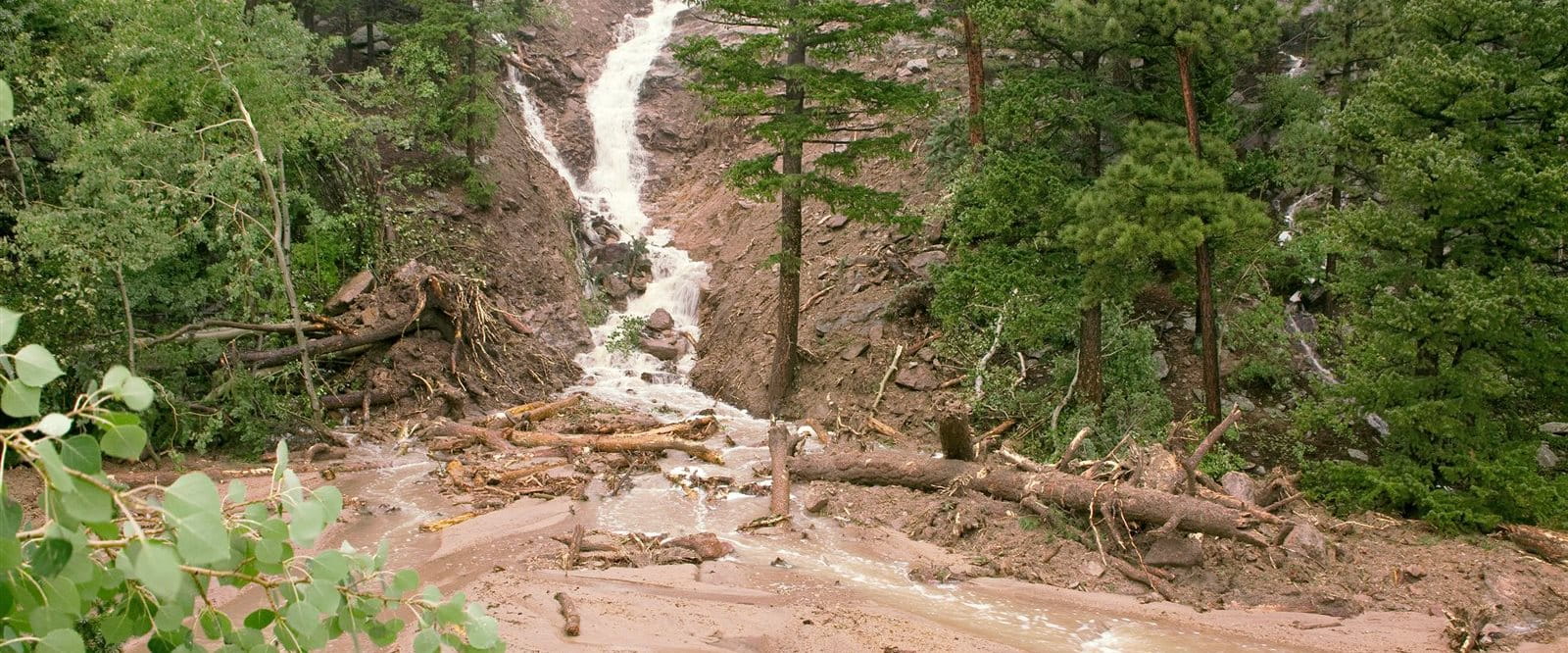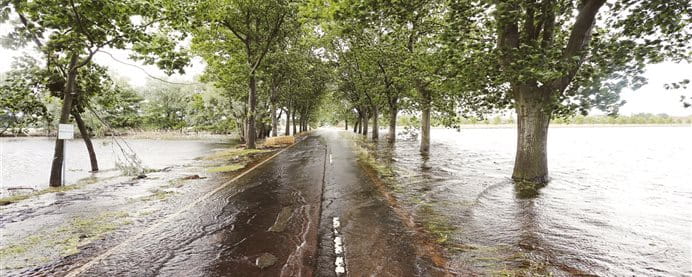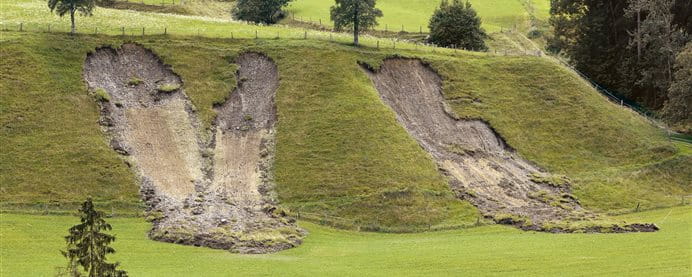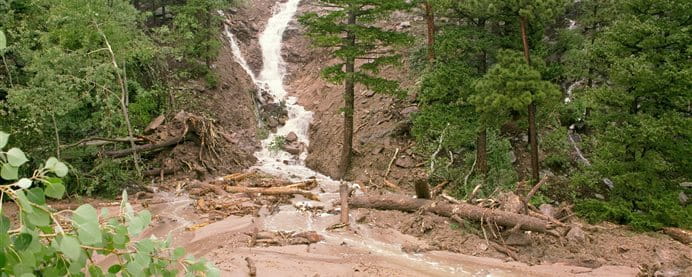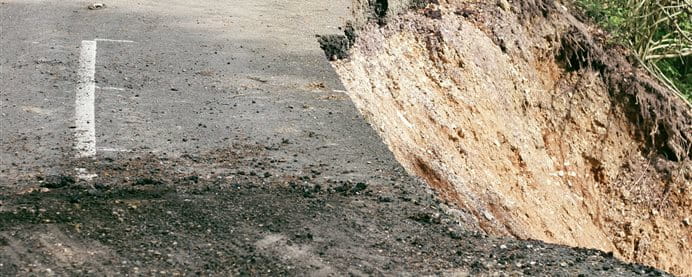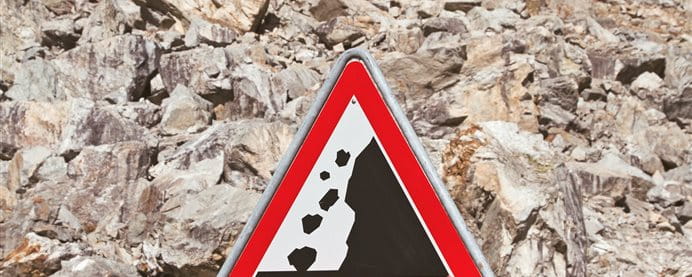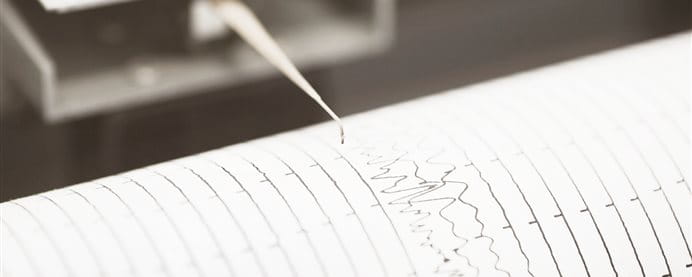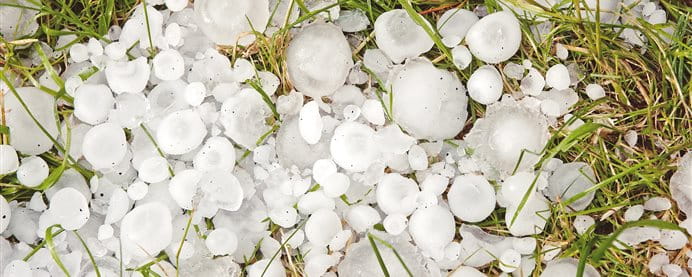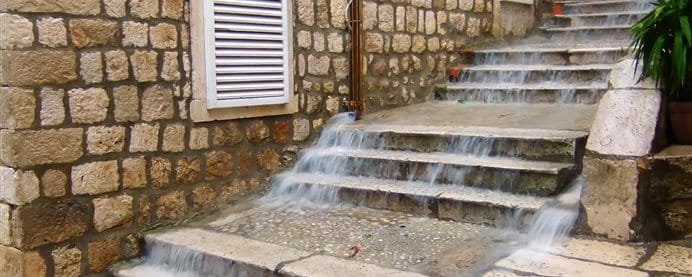This mixture of water-laden debris generally flows through a stream bed and can reach speeds of up to 60 km/h. Steep terrain, strong rain and snowmelt promote debris flows.
Debris flows are fast-flowing mixtures of water and a high percentage of rocks, boulders, debris, sand and wood. They reach speeds of up to 60 km/h. That means they have much greater destructive power than water alone. These flows pose a hazard for entire buildings and the people in them. Large blocks of stone and tree trunks serve as ramrods in mud avalanches of this kind. The masses of rocks carried along in debris flows literally give the water greater weight and striking capacity – they tear down everything standing in their way. They often roll from one side of fields and forests to the other and fill entire basements and ground floors with rubbish.
Debris flows are triggered in particular by extremely heavy rains or continuous rain combined with snowmelt. As a rule, debris flows follow existing stream beds or channels into the valley and can widen them considerably or carve whole new channels. On arriving in flatter terrain, these flows deposit rocks and meter-sized boulders in tongue-shaped formations. Ridges of sediment known as “levees” are deposited naturally alongside debris flow channels.
In areas where debris flows occur frequently, large cone shaped depositions form. Numerous settlements in the Alps have been built on these types of debris cones of all places, because they offered relative safety from floods in the valley floors. Examples are Brig and Naters in the canton of Valais or Brienz in the canton of Bern. As the population and the economy grew over time, people built closer and closer to the dangerous streams, with corresponding consequences for man and material.
Today, dangerous courses of streams and channels are given more space based on information from the hazard maps and corresponding technical reports, so that floodwaters or debris flows do not automatically leave their raceways and cause damage. Wherever necessary, lateral embankments, torrent barriers, bed load detention basins, debris barriers or debris brakes are built. Reforestation and care of alpine forests can help to prevent debris flows from happening in the first place, because the tree roots absorb a lot of moisture and hold the soil together.
